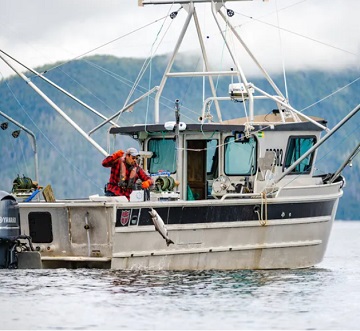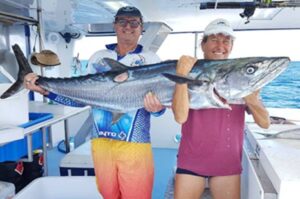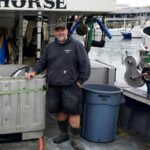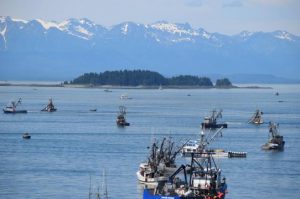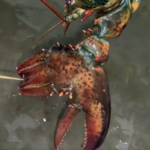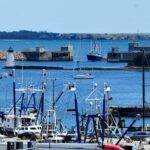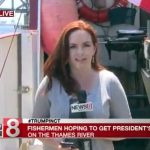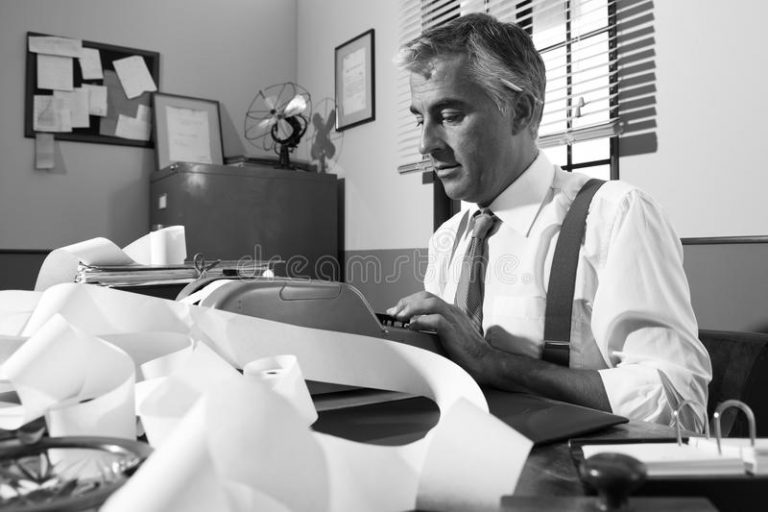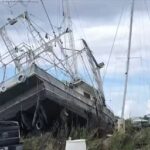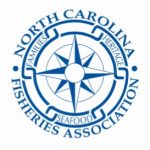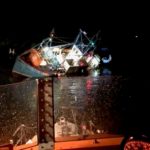Category Archives: Pacific
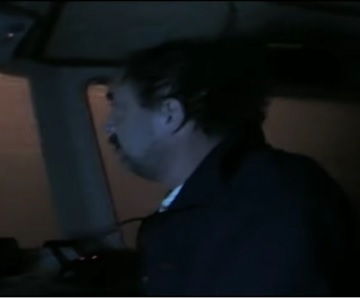
Deadliest Catch’s F/V Aleutian Ballad comeback from 60ft ‘rogue wave’ capsize
The Aleutian Ballad is one of Deadliest Catch’s most memorable fishing vessels. Deadliest Catch’s F/V Aleutian Ballad was captained by Jerry ‘Corky’ Tilley. The Washington born captain was in charge of the boat when it was hit by a wave the size of a five-story building in season 2. The 107-foot-long welded steel crabber was capsized by the “rogue wave,” and exited the Discovery series. Speaking on Deadliest Catch, Captain Jerry said that the weather conditions were “unbelievable.” At 3 am, the Captain had to navigate the 100ft tall boat through 40ft seas and 60-mph winds before it was hit by a 60ft wave. During Deadliest Catch season 2, fans saw the Aleutian Ballad with a dead engine after being hit by a “rogue wave.” Video, >click to read< 06:49
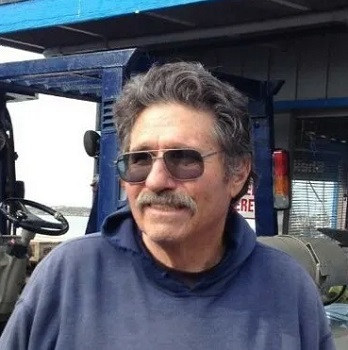
Commercial Fisherman Frederick Reno Italo Arnoldi of Morro Bay, has passed away
Frederick “Fred” Arnoldi, 72, of Morro Bay, California, left on his Eternal Hunting and Fishing Trip in the early morning hours of Tuesday, June 27, 2023. He is survived by his wife Diane Arnoldi; siblings Dennis Arnoldi and Janice Morgan; nieces, nephews, children, grandchildren, and great grandchildren. Fred was born and raised in Santa Barbara, where he attended Santa Barbara High School. He left Santa Barbara to become a commercial fisherman from 1968 until his last day on earth. He fished salmon in Alaska and the South Seas. Fred seined in San Pedro, and fished herring in San Francisco. Fred owned several vessels including Drifter, Halcyon, Roselena Marie, H2O K-9 and Amakua. >click to read< 21:29
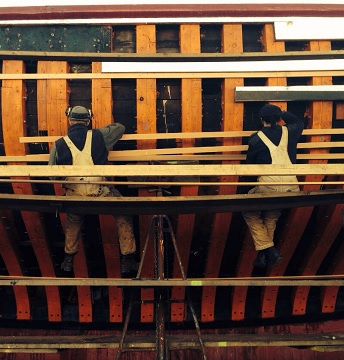
Port Townsend: Haven Boatworks expands their wake
The team of shipwrights at Haven work on all types of boats, from upkeep on commercial fishing boats to repairs on yachts and wooden sail boats. At any given time, they may have more than a dozen boats in the yard. They stay busy from mostly word-of-mouth referrals from delighted customers. Blaise Holly says that whether commercial or private, captains have a relationship with their vessels. For commercial owners a boat is their livelihood where they spend the bulk of their time. Every year or two most boats need some type of routine maintenance, like cleaning off buildup of seaweed and barnacles from the hull photos, >click to read< 15:01
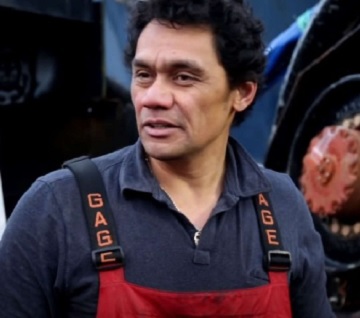
Toughest Cast Members From Deadliest Catch
It’s easy to fall into the trap of beginning to think that just because “Deadliest Catch” is on television, there’s no way that the producers or the network could possibly let anything happen, but here’s the thing: The Bering Sea doesn’t really care who’s watching, and one slip-up can mean the end of a life. Those who go out, do so prepared to face the worst. That said, not all crew members are made of the same stuff. There are some that have been forged in fire, come out the other side, and then gone on to spend months at a time in one of the most unforgiving landscapes in the modern world. That takes a kind of toughness that can’t be measured … and it’s one that’s not always about who can bench-press the most. >click to read< 11:02
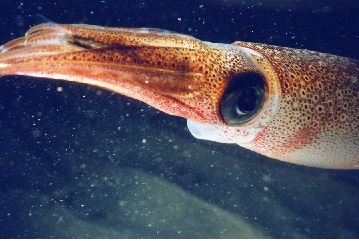
Cooler ocean means better business for squid fishermen off La Jolla
Though a cool and wet start to 2023 had many locals lamenting the weather, coastal fishermen and seafood lovers are celebrating an environmental perk: the proliferation of squid off La Jolla’s coast. “It’s a historical thing that happens,” said independent commercial fisherman John Law. He said the squid currently are abundant from the underwater canyons off Scripps Pier down to Crystal Pier in Pacific Beach and even into Baja California, Mexico. Catching squid is a “team effort,” said San Diego fisherman Kelly Fukushima. The squid feed at night, so catching them requires two boats: one to scout the squid and use lights to aggregate a school and a second to catch and haul in the squid. >click to read< 14:01
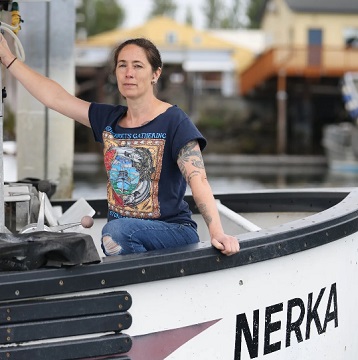
An Alaska fishery has been pitted against orcas. Can both survive?
In early May a Seattle federal judge put the brakes on this summer’s troll fishery in Southeast Alaska, ruling that the National Oceanic and Atmospheric Administration must amend its 2019 report on the impact of the fishing on endangered southern resident orcas who prefer to eat the same Chinook. But the ruling was put on hold last month by a U.S. appeals court, which allowed the fishery to reopen, citing economic harm. The complicated and contentious case probes the soft underbelly of the issue of the southern residents’ plight: the availability of nutrient-rich Chinook, their preferred meal. While fisheries up and down the West Coast are allocated fish for harvest each season, the southern residents get what’s left — and not intercepted by other predators. It has pitted fishers against orcas as some scientists and conservationists call into question the effectiveness of modern fisheries management. 9 photos, >click to read< 10:16
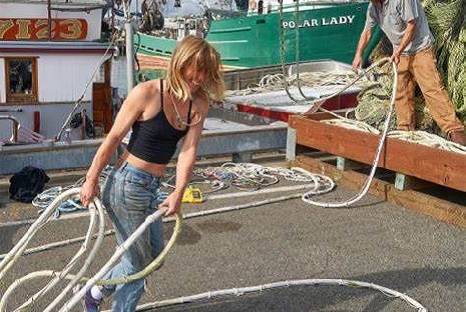
More women are casting their net into the salmon fishing industry
Breaking into a man’s industry isn’t easy, but “in large part, the industry is welcoming to women,” says Captain Allison Demmert, preparing her boat dockside at Fishermen’s Terminal. Allison is gearing up for the Alaska salmon season on the 58-foot F/V Chirikof (named for the Russian navigator who explored the Northwest coast of North America). Having captained the F/V Ultimo, moored one dock over, with four women out of a crew of five aboard, this year she will co-skipper their  purse seiner with her father Captain Guy Demmert and a crew of two men and two women. Born into an Alaskan family that has fished salmon for generations, she expanded her hands-on training with a maritime-engineering education. Mastering credentials like “advanced firefighting,” she’s in charge of “navigation, route planning and vessel maneuvering in all kinds of weather.” It’s a job that calls for “stamina, agility and above all, calm.” photos, >click to read< 14:38
purse seiner with her father Captain Guy Demmert and a crew of two men and two women. Born into an Alaskan family that has fished salmon for generations, she expanded her hands-on training with a maritime-engineering education. Mastering credentials like “advanced firefighting,” she’s in charge of “navigation, route planning and vessel maneuvering in all kinds of weather.” It’s a job that calls for “stamina, agility and above all, calm.” photos, >click to read< 14:38
Athearn Marine Agency Boat of the Week: 60′ Duckworth Steel Longliner/with permits, Cat 3406T Diesel,
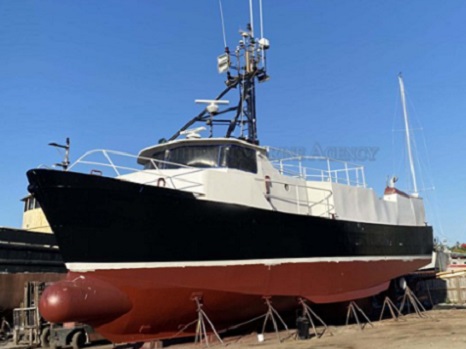 To review specifications, information, and 24 photos’, >click here<, To see all the boats in this series >click here< 11:45
To review specifications, information, and 24 photos’, >click here<, To see all the boats in this series >click here< 11:45

Biden admin under fire for offshore wind impacts on military operations
Earlier this week, Rep. Chris Smith, R-N.J., industry stakeholders and experts met with officials from the Government Accountability Office (GAO), a top federal watchdog agency, to discuss their concerns about offshore wind development. According to Smith, who represents a district along the Atlantic coast home to a naval weapons depot and where offshore wind projects have been proposed, more than an hour of the three-hour meeting was devoted to military impacts. The GAO recently agreed to investigate the wide-ranging effects of offshore wind development after Smith, fellow New Jersey Rep. Jeff Van Drew, House Natural Resources Committee Chairman Bruce Westerman, R-Ark., and several other lawmakers called for a probe. The investigation will look, in part, into wind turbines’ impact on military operations and radar. >click to read< 07:55
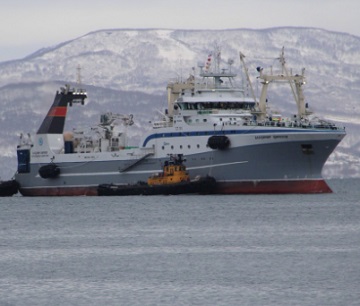
Are you eating Russian fish? Imports slip through a loophole involving China, says Sen. Dan Sullivan
The loophole in the law is the subject of Sullivan’s U.S-Russian Federation Seafood Reciprocity Act of 2023. Over 18 months ago, Sullivan first attempted to pass his U.S-Russian Federation Seafood Reciprocity Act by unanimous consent, but the bill was blocked by Senate Democrats. The current version was blocked Thursday by Sen. Ed Markey, a Massachusetts Democrat, just like it was last year. Markey’s own state seafood industry is not supporting him in his opposition to Sullivan’s legislation. In February, the Massachusetts Seafood Collaborative called upon elected leaders to sanction Russian seafood imports. “If you’re a big fisherman in Massachusetts or the great state of Alaska…you cannot export one fish to Russia. Nine years of a ban. And guess what? The United States lets Russian seafood into America almost duty free … >click to read< 10:17
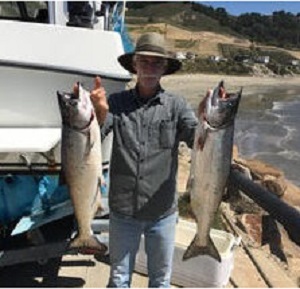
Will Morro Bay wind farms be the demise of Port San Luis?
I heard about the proposed Morro Bay Offshore Wind Farm awhile back but didn’t really think too much about it. But now I understand there is a plan to industrialize Port San Luis to be used as a base to assemble, operate, and maintain the 1,000 feet wind turbines for the wind farm and for the Vandenberg Space Force base to barge in rockets and components that are too large to travel by land. I am not sure this is such a good idea. I began to do some research on wind farms. This developed into hours and hours of digging through material. What I have learned is quite alarming. >click to read< 08:06
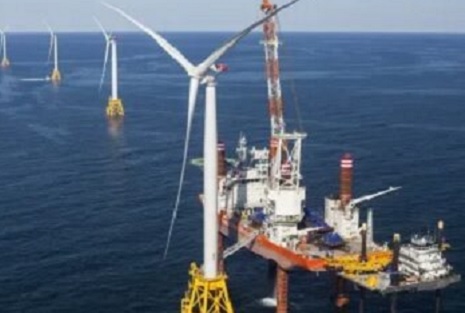
Oil Company con game exposed; the old switcheroo by Jim Lovgren
Oil companies developed techniques to not only locate oil and gas reserves thousands of feet below the ocean bottom, but to drill and recover them. Unfortunately, the tools used to locate oil reserves under the ocean floor, primarily seismic air gun arrays, have left a trail of dead sea creatures in its wake. Just like the US Navy, who for years denied the growing body of evidence linking military sonar usage to localized marine mammal strandings, the oil industry has denied any link of seismic research to the marine mammal strandings that invariably occur near their operations. Along comes Biden’s green new deal, and the east coast is now swamped with offshore research vessels using both sonar and seismic devises to map the sea floor and thousands of feet underneath it, for wind development. The same vessels in many cases that would have been involved with the 2012 proposed marine mammal massacre in search of oil reserves. These vessels are not only surveying the area in the lease site, but for many miles away from them, in many cases overlapping into other lease sites, or just mapping bottom that will never be available. Why? >click to read< 11:11
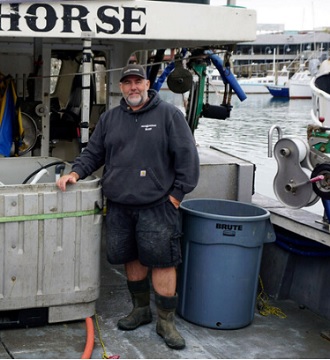
This fishing gear can help save whales. What will it take for fishermen to use it?
Fishing boats would normally still be unloading Dungeness crabs at San Francisco’s fisherman’s wharf in May. This year, the docks were quiet, except for one berth. “We’re the only boat right now,” says Brand Little, standing next to a large tank of bright red crabs on the deck of his boat, the Pale Horse. State regulators closed the Dungeness season two months early this year, due to the arrival of humpback whales in the area. On both the East and West Coasts, crab and lobster fishermen are seeing their fishing seasons shrink over concerns that whales are getting entangled in the long ropes attached to their gear, accidents that often end up injuring or killing the animals. Photos, >click to read< 08:08
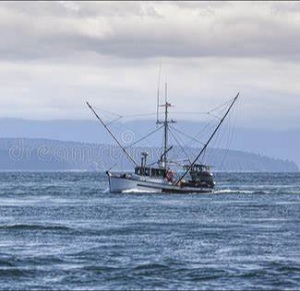
Letter: Lawsuit wrongly accuses salmon trollers
In the fall and winter, you can find me in Eastern Washington, working on building a new 50-foot salmon troller. Every year when June 20th comes, I trek north to my second home, southeast Alaska. From July to September, I can be found commercial fishing on a 40-foot salmon troller out of Sitka, Alaska. I’m not the only one who migrates every summer to southeast Alaska to make my living; other residents in Eastern Washington also head to Alaska to participate in this iconic salmon fishery. This summer is different though. Hundreds of other fishermen and I are left not knowing if we’ll have an income this year due to Wild Fish Conservancy’s attack on small-boat family fishermen through its misguided lawsuit,,, >click to read and comment<14:47
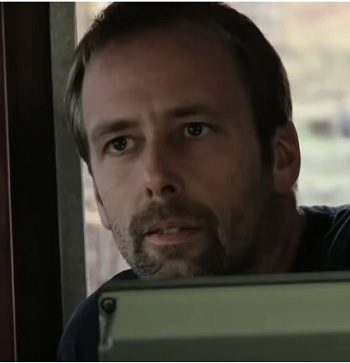
Every Deadliest Catch Captain Ranked from Worst to Best
First airing in 2005, the reality TV show follows a featured fleet of fishing vessels as they try to do battle with the elements, and each other, in order to get the best stock of crab possible. Though its concept might sound mundane, the show has often courted controversy, with sexual harassment claims, legal woes, and jail time all attached to various stars that have appeared throughout the years. 2023 brings viewers the show’s nineteenth season, plenty of captains have been able to establish themselves as fan favorites. From newbie faces appearing in later seasons to those who have weathered the storms since its pilot episode, there’s been a captain to cater to every taste, and then some. But who fares the worst, and who is the best? Grab your waders and read on for a ranking of every “Deadliest Catch” captain. >click to read and comment< 12:39
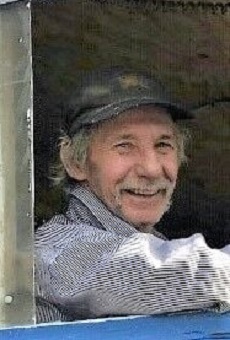
Commercial Fisherman Michael R. Price of Newport, Oregon, has passed away
Michael “Mikey Who” (as he was known to many) was born on February 25, 1955, in Coos Bay, Oregon to Roy L. Price and Jeanette G. (Bunker) Price. He graduated as an Honor Student from Pacific High School in 1973. That fall he enrolled in SOC at Ashland, Oregon. He attended SOC for 2 years then left to become a full-time commercial fisherman and he never looked back. His first boat was named the Abiquay. He fished for salmon and bottom fish at that time. He and his faithful dog, Quila, became well known on the Oregon and Northern California coast as fine fishermen. They made friends everywhere they traveled. >click to read< 12:08
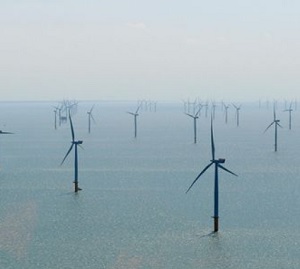
Government Watchdog Agrees to Probe Effects of Offshore Wind Turbines
Following a request from a group of Republican congressmen, the Government Accountability Office (GAO), an independent watchdog, has agreed to conduct an investigation into the environmental effects of offshore wind turbines, which the Biden administration has increasingly supported. The effort was spearheaded by Representative Chris Smith (R., N.J.), who sent a letter to the GAO’s comptroller requesting information about the effects in the North Atlantic Planning Area, which extends from Maine to New Jersey. Of particular interest is whether wind turbines will cause economic and marine-life problems affecting commercial fishing. >click to read< 07:38
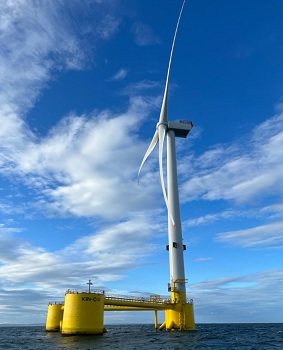
Kotek calls for pause on offshore wind turbines
Gov. Tina Kotek is joining a chorus of voices, including tribes and commercial fishermen, urging the Biden administration to slow down its push for floating wind farms in the Pacific Ocean off the state’s southern coast. Regulators are now preparing a draft report outlining where in the areas turbines may be built safely while minimizing harm to fisheries and marine life. Members of the West Coast fishing industry, however, claim that the bureau is ignoring their concerns. They worry that floating offshore wind farms will displace boats from highly productive fishing grounds and could irreversibly damage the California Current ecosystem. >click to read< 09:20

Coast Guard rescues 2 men from capsized boat off Southwest Oregon Coast
The 2 menrescued two people from their boat after it capsized Wednesday night off the coast of Nesika Beach. Watchstanders at Coast Guard Columbia River received notification around 7:30 p.m. from the wife of the captain of a 26-foot commercial fishing vessel stating that her husband had not made it back to the marina at the time he said. The wife had also relayed to the Coast Guard that a friend had called the vessel operator at approximately 3 p.m., which was the last time someone had contact with anyone on the vessel. Utilizing cell phone forensics, watchstanders were able to narrow down a viable search area. Just after 11 p.m., the aircrew located the vessel with the men sitting on the overturned hull. They were not wearing life jackets. The helicopter crew then vectored the boat crew to the scene. >click to read< 21:42

Who will benefit from Morro Bay wind energy job creation?
California plans to rely on offshore wind energy to achieve its renewable energy goals. The off-shore wind farms are projected to generate 2,000 to 5,000 megawatts of energy by 2030 and 25,000 megawatts by 2045. Cyrus Ramezani and Mahdi Rastad’s 86-page report details the economic impacts of the Morro Bay wind energy projects and identifies the types of jobs that will be created. Last year, the federal government auctioned off three offshore wind energy sites located between 20 and 30 miles off the coast near Morro Bay. The report does not discuss the number of jobs the county will lose in the fishing and hospitality industries. >click to read< 16:30
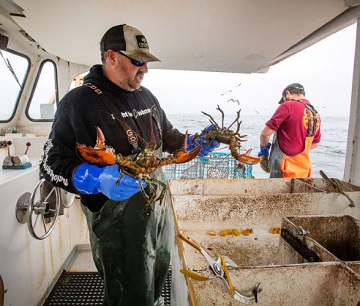
Canadian and American lobster industry confronts ‘ropeless’ traps after whale entanglements
Injuries to endangered North Atlantic Right Whales ensnared in fishing gear have fueled a prominent campaign by environmental groups to pressure the industry to adopt on-demand equipment that only suspends ropes in the water briefly before traps are pulled from the water. To address the problem, the U.S. and Canadian governments have imposed new regulation on lobster and crab fisheries in recent years, including the use of weak links in rope that break if a whale swims through, color-coded rope for tracing, adding more traps per buoy line, and zone closures during whale migration. Washington and Ottawa are now promoting ropeless fishing as a possible long-term solution. But lobstermen, particularly in Maine where 80% of U.S. lobster is caught, are not enthusiastic. >click to read< 08:49
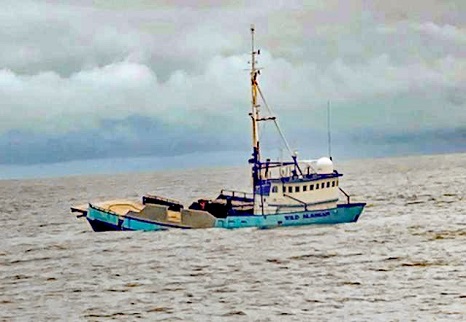
Darren Byler files Two Multi-Million Dollar Lawsuits Against the Coast Guard and the City of Kodiak for the Illegal Sinking of the M/V Wild Alaskan
The 110’ F/V Shaman a Bering Sea Legend was just recently, intentionally sunk by the City of Kodiak, Alaska. The vessel was purchased in 2006 by Darren and Kimberly Byler from then owner, Dan Mattsen. The Byler’s took possession of the vessel at Fisherman’s Terminal in Seattle, Washington and relocated the vessel to Alaska. The Byler’s modified and remodeled the vessel for the Research, Exploration and Long-Range Charter Industry. From 2007-2014 Darren and Kimberly Byler were at the top of their game with this boat and renamed the vessel “Alaskan Leader”. In 2014, Darren Byler stated that his charter business bookings were down as was the economy, at that point Byler came up with an edgy idea to rename the vessel “Wild Alaskan” and provide an Adult Entertainment Charter with Topless Dancers to the local Kodiak Fishing and Coast Guard Population. >click to read< 17:44
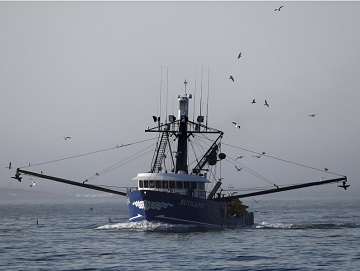
Courts threaten to sink federal fishery monitoring
NOAA suffered a major blow in February when a three-judge panel of the 5th U.S. Circuit Court of Appeals in Louisiana threw out a rule that would have required charter boats in the Gulf of Mexico to be equipped with electronic monitors to report fish catches. Fishermen complained that the devices would cost them as much as $3,000 per boat. And the agency may be poised for an even bigger setback from the Supreme Court. Justices last month said they would take up a case that could decide whether NOAA has the legal authority to force New England herring fishermen to hire third-party contractors to monitor their fishing at a cost of up to $700 per day. >click to read< 13:55
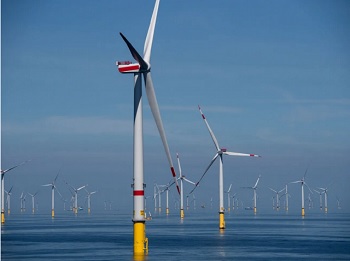
Contrary to mainstream belief, wind turbines are neither effective nor, in many cases, good for the environment
Claims of wind power being pro-environment often do not consider the damaging effects these projects can have on wildlife and ecosystems, thus hiding the “true cost” of such initiatives. Wind power projects can threaten birds that fly within their vicinity and trigger a decline in their population; it can harm marine life due to noise pollution and affect the growth of plants in the region where it is located. Driven by subsidies granted by the federal government, the growth of wind projects has triggered concerns about the cumulative impacts they have on the environment. There have been growing protests against wind power projects across the world. In the United States, people have opposed setting up wind turbines in Lake Erie due to concerns about the environmental impact of the project. In New Jersey, protestors have asked to pause the development of an offshore wind farm which they claim has led to dolphins and whales washing ashore. >click to read< 12:38
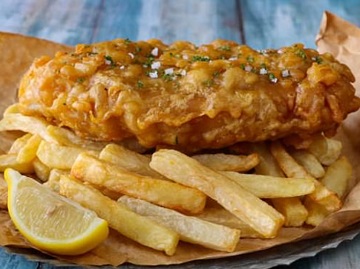
Will American fish save our chippies? Massive rise in the cost of cod and haddock is forcing firms to look for cheaper alternatives
A huge rise in the cost of cod and haddock, alongside a tariff on Russian white fish, is forcing firms to look for cheaper alternatives, including rockfish, also known as Pacific perch, and hake, which the US west coast has in abundance. They both taste similar to cod. Andrew Crook, president of the National Federation of Fish Friers, visited Oregon last month as part of a delegation from the UK seafood industry. He said the huge surplus of fish in the US could ‘take the pressure off’ needing to find expensive supplies closer to home. >click to read< 12:01
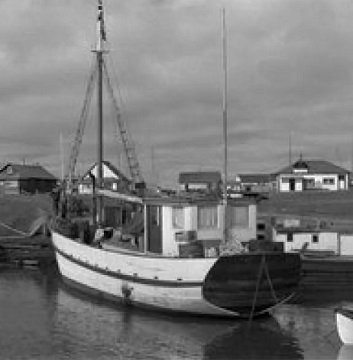
Fabled 1930s Arctic fur-trading ship, built for Inuvialuit trappers, needs a new home
It’s a piece of Canadian Indigenous history, and an effort is underway to ensure the 88-year-old Arctic fur-trading ship, called the North Star of Herschel Island, stays in Canada. The 24-metre ship has a storied history, dating from a time when the Arctic fur trade was still thriving, and northern communities were reaping the rewards. The North Star of Herschel Island was built in 1935 in San Francisco, for two Inuvialuit trappers: Fred Carpenter and Jim Wolki. The two had a lucrative business in the Western Arctic and they designed a vessel that would serve as an essential tool of their trade. >click to read< 10:51
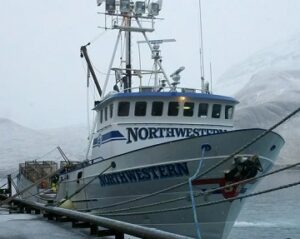
Deadliest Catch: What Happened to the F/V Northwestern?
The only boat to appear in all 19 seasons of the show, the F/V Northwestern is owned by the Hansen family and skippered by Sig Hansen, according to the Discovery Channel’s F/V Northwestern origin story, posted on Youtube. Surely the 124-foot-long fishing boat built in 1977 has weathered some rough seas, but so has the family that owns her. Despite lawsuits, a sexual assault conviction, and more accusations, the Northwestern has remained integral to the livelihood of the family. >click to read< 09:50
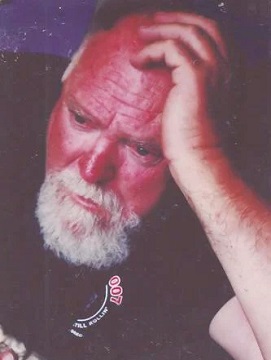
Army Vet/Commercial Fisherman Dale F Baines “Whaler” of Brookings, Oregon, has passed away
Dale was born on May 18, 1952, in Sacramento, CA to Vern and Marie (Barclay) Baines. At the age of 13 his mother and stepfather Leland Holmes moved the family to Gold Beach. Dale attended and graduated from Gold Beach High School in 1971. Soon after graduation he was drafted into the Army. Dale loved to fish from a young age. It was not surprising he became a commercial fisherman and in 1976 he bought his first F/V the TAKU a small salmon trawler which he fell overboard while fishing by himself off Eureka CA. Thankfully the Lord was not ready for him and saved him so that he could marry Mindy Payne on September 26, 1987. Dale spent many years working on others boats, until 2003 when he and his wife purchased the F/V Innisfree. >click to read< 13:04






